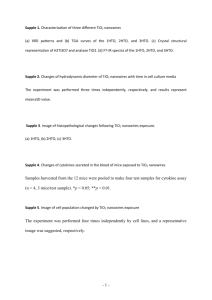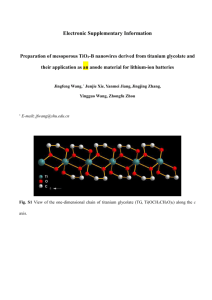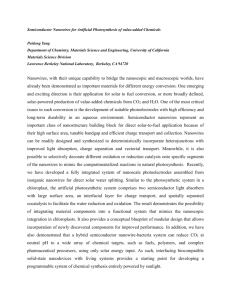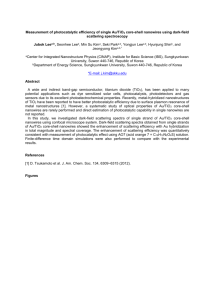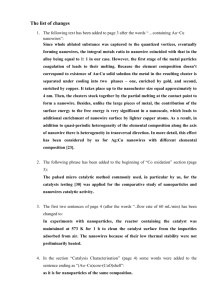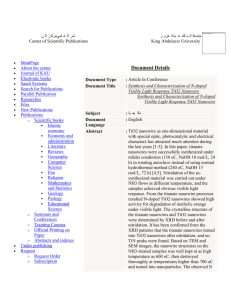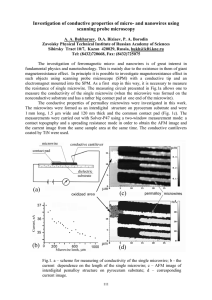SupplementaryInformation_v3
advertisement
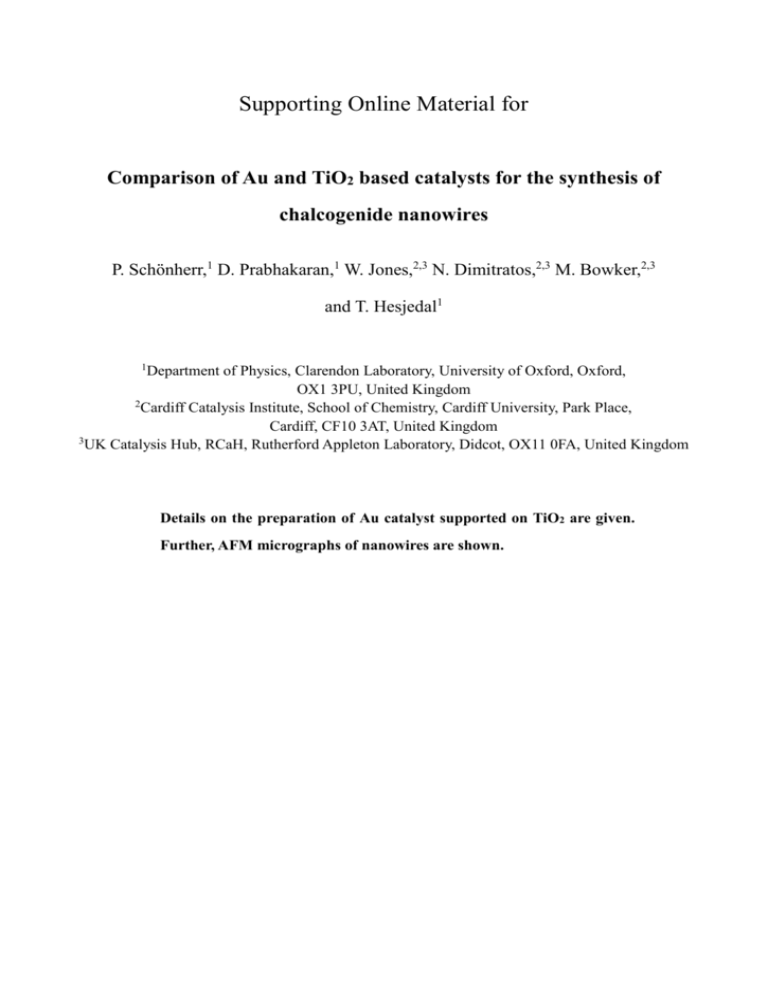
Supporting Online Material for Comparison of Au and TiO2 based catalysts for the synthesis of chalcogenide nanowires P. Schönherr,1 D. Prabhakaran,1 W. Jones,2,3 N. Dimitratos,2,3 M. Bowker,2,3 and T. Hesjedal1 1 Department of Physics, Clarendon Laboratory, University of Oxford, Oxford, OX1 3PU, United Kingdom 2 Cardiff Catalysis Institute, School of Chemistry, Cardiff University, Park Place, Cardiff, CF10 3AT, United Kingdom 3 UK Catalysis Hub, RCaH, Rutherford Appleton Laboratory, Didcot, OX11 0FA, United Kingdom Details on the preparation of Au catalyst supported on TiO2 are given. Further, AFM micrographs of nanowires are shown. 1. Sol-immobilization method Au catalysts supported on TiO2 (type P-25) were prepared using a sol-immobilization method. An aqueous solution of HAuCl4•3H2O of the desired concentration (1.268 x10-4 M) was prepared. To this solution polyvinyl alcohol (PVA) (1 wt% solution, Aldrich, weight averaged molecular weight MW = 9000–10 000 g mol-1, 80% hydrolyzed) was added (PVA/Au (wt/wt) =0.65). Subsequently, a 0.1 M freshly prepared solution of NaBH4 (>96%, Aldrich, NaBH4/Au (mol/mol) = 5) was then added to form a dark-red/brown sol. After 30 min of sol generation, the colloid was immobilized by adding TiO2 (acidified to pH 1 by sulfuric acid) under vigorous stirring conditions. The amount of support material required was calculated so as to have a total final metal loading of 5% wt. After 1 h the slurry was filtered, the catalyst washed thoroughly with distilled water and dried at 120°C for 8 hours. 2. Atomic force microscopy imaging of nanowires An AFM image of two P-25 grown nanowires is presented in Fig. S1. The tip shape is similar to the tip seen in TEM images [see, e.g., Fig. 3(b), main text]. Protrusions are found at the very top, but no trace of a catalyst particle. Fig. S1. AFM micrograph of two nanowires grown at 450°C. Protrusions on both sides are highlighted (dashed circles). They are indicators of VS tip-growth, since no catalyst was found at the other end. 1

